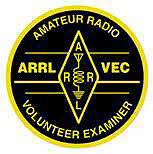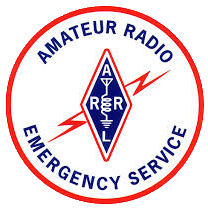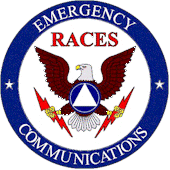Why Emergency Communications?
- Details
Two distinct events combined to turn my mind to emergency preparedness. September 11th, 2001 and Hurricane Katrina. One mass-murder by warriors of Islam and the other mass destruction caused by nature and made worse by incompetence in local government. In either case, they are examples of why we should be better prepared for the unexpected so we can ride it an emergency while our neighbors and local, state, & national governments work to restore normalcy to our lives.
September 11, 2001 returned my mind to thoughts of emergency preparedness and my early emergency response training. But, as is often the case, I lapsed into a "maybe I'll do something next week" line of thought. Well, at least I was thinking about it.
Emergency Communications Organizations & Systems
- Details
We’ve discussed EMCOMM organizations in the past, so I’ll just remind everyone that while ARES is rapidly becoming the most prevalent EMCOMM organization there are others include RACES, SATERN, MARS, SHARES and REACT.
· RACES: Radio Amateur Civil Emergency Service. Normally setup and administered by local or state Emergency Management Agencies.
· SATERN: Salvation Army Team Emergency Radio Network. Amateur Radio Operators who are also volunteers with the Salvation Army operate this network.
· MARS: Military Affiliate Radio Service. This is a Department of Defense sponsored communications program managed by the Army, Navy, and Air Force.
EMCOMM After 2001
- Details
Emergency response has changed drastically over the past several decades, especially since 2001, and the utilization of Amateur Radio operators has been affected by it. The days of showing up unannounced with your HT and “go kit” have pretty much gone the way of the vacuum tube.
The September 11th attack and Hurricane Katrina both acted as wakeup calls to a variety of emergency response agencies all the way from the courthouse to Washington, DC. Longstanding issues, like the inability for local public service agencies to communicate with each other (such as fire and sheriff) as well as inability for state and federal agencies to interoperate with each other and local entities was a major embarrassment during the September 11th and Katrina responses.
ARES, MOUs and Served Agencies
- Details
ARES, at the national, state, and local level often enters into agreements with other communications organizations, non-governmental organizations (NGOs), and government at different levels. These agreements, usually called memoranda of understanding or an MOU for short, define the relationship between ARES at different levels and these entities.
The MOU provides a framework under which we provide mutual support, depending upon where the need is. Setting aside local MOUs, such as the one between Carroll County ARES and Tanner Medical, the state and national ARES organizations have MOUs that extend to the local ARES organizations as well. These organzations include the Red Cross, Salvation Army, Civil Air Patrol, Citizen Corps, Natonal Weather Service, and others.
In many cases these entities operate their own corps of Amateur Radio Operators that ARES volunteers would work with in the event the MOU is invoked and ARES support is requested. Many ARES members are also members of these alternative organizations, and while volunteerism is promoted in amateur radio, such dual-allegiance can cause problems in the even two different organizations call up their amateur radio operators at the same time.
Professionalism In Amateur Radio
- Details
Amateur Radio and Public Safety have changed a lot through the past few decades. As population densities increased and the impact of fires and floods impacted a larger group of people, larger metropolitan areas began developing procedures to enhance their ability to respond.
Ultimately, systems developed as a result of major fires in California were refined and adopted by many states, and ultimately the federal government. FEMA now provides a standardized set of training programs that standardizes protocols at the local, state, and national level, without inhibiting the local government's ability to retain control of operations.
The new standard protocol, called the Incident Command Systems, or ICS for short, is taught across all the above mentioned layers of government and non-government organizations (or NGOs for short), who would respond in an emergency.
Despite the push for standardization and inter-agency communications, virtually every agency had its own communications gear and frequencies that were generally not compatible. This remained true even into the 2000s.
Page 6 of 12




